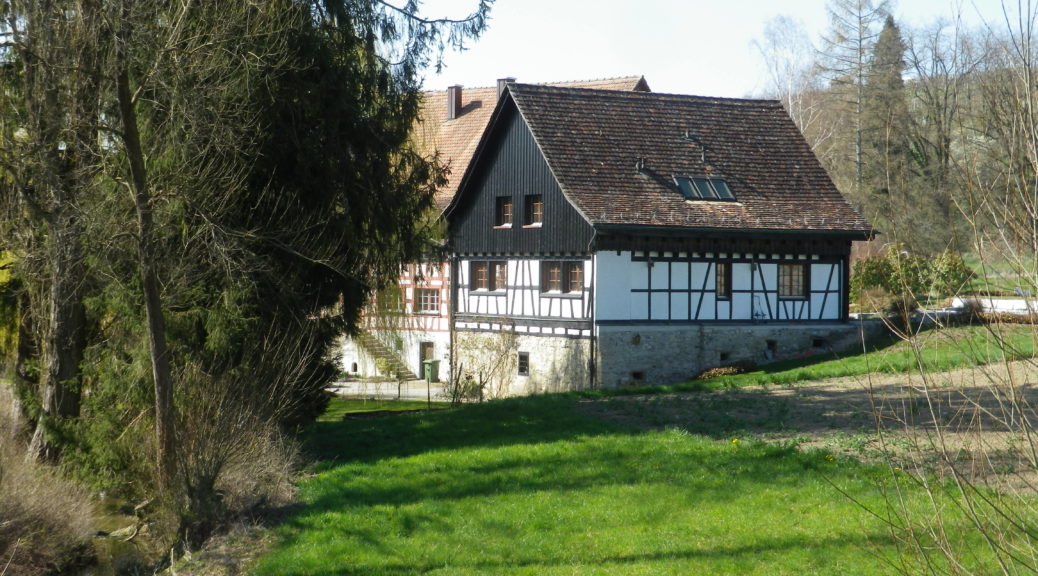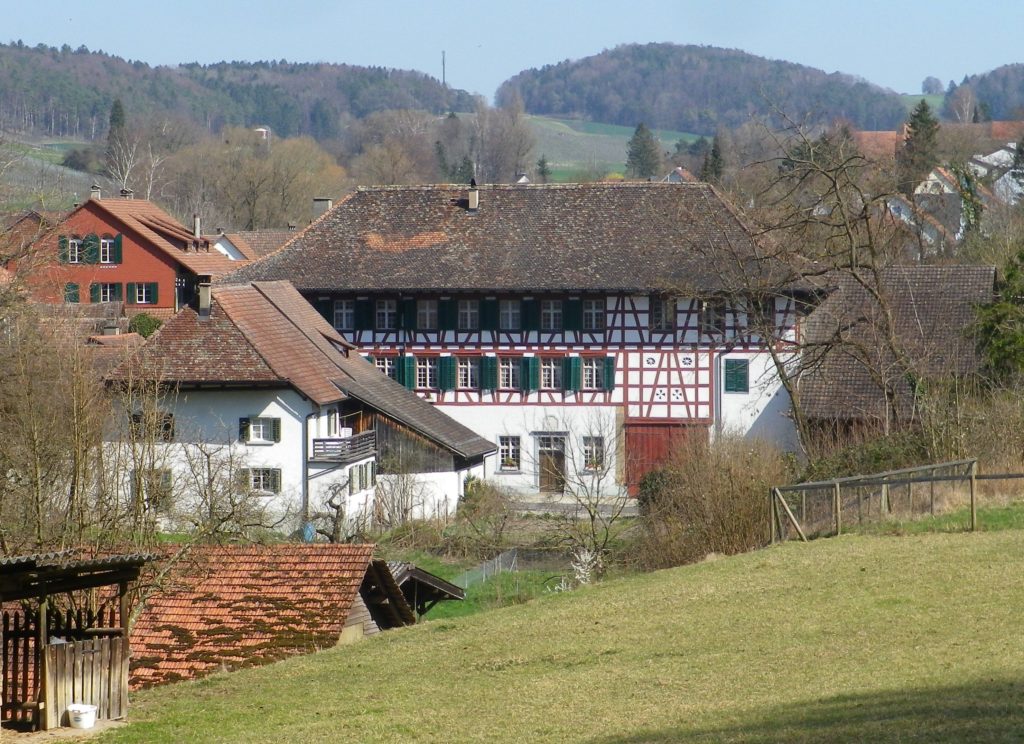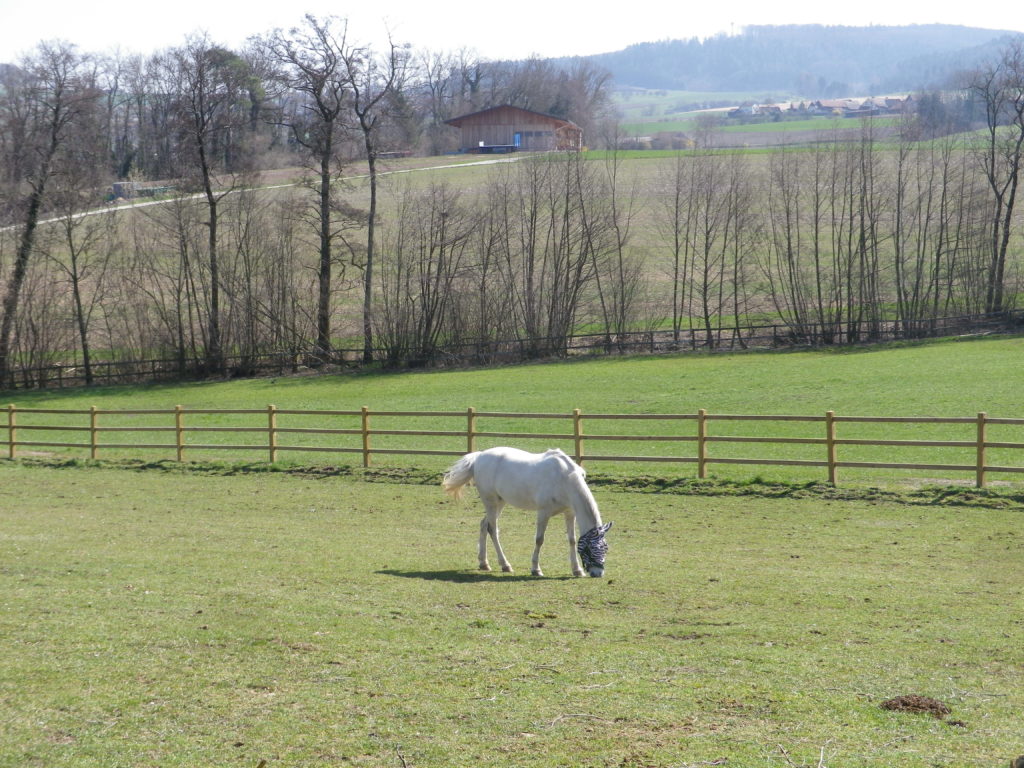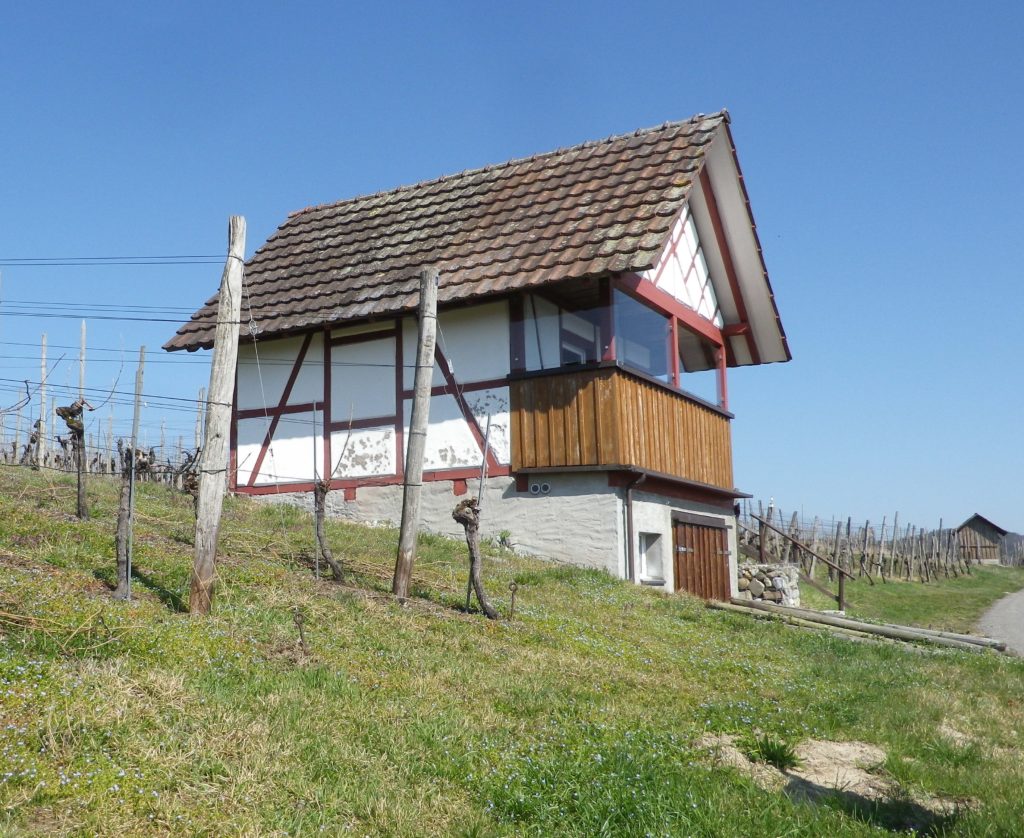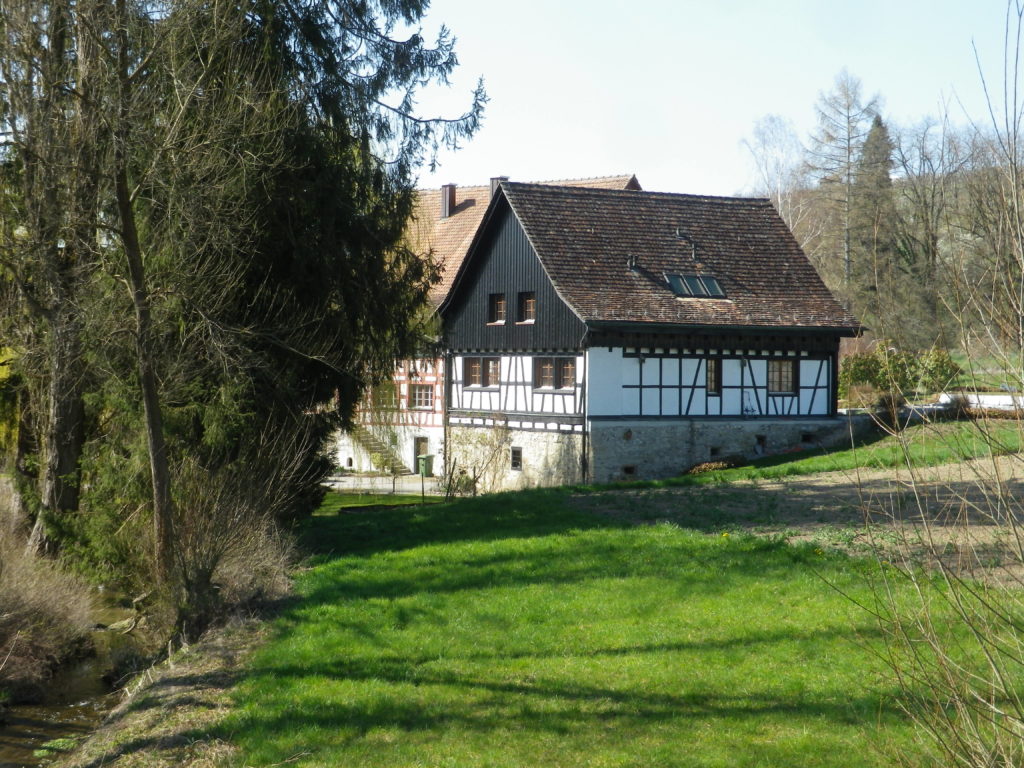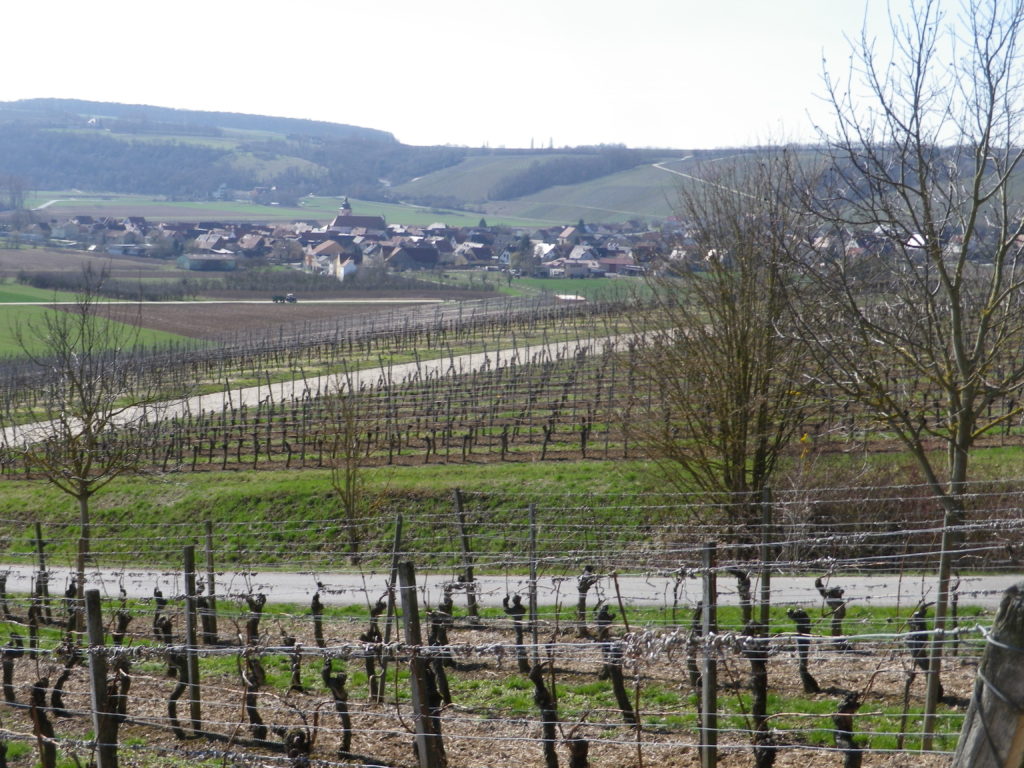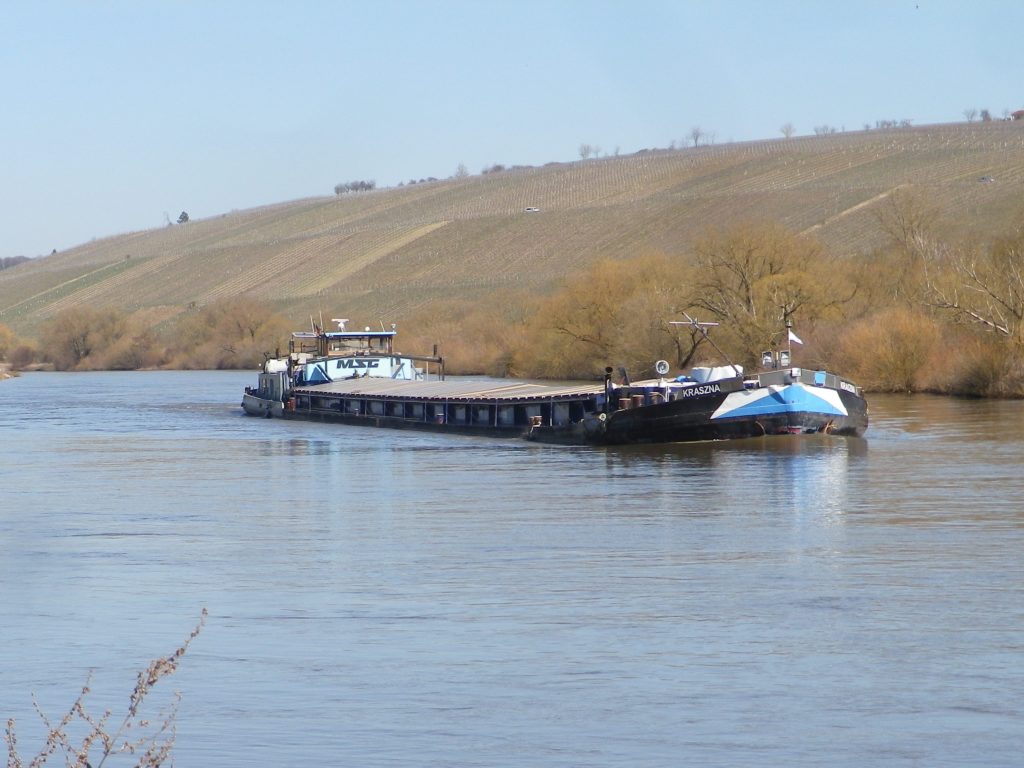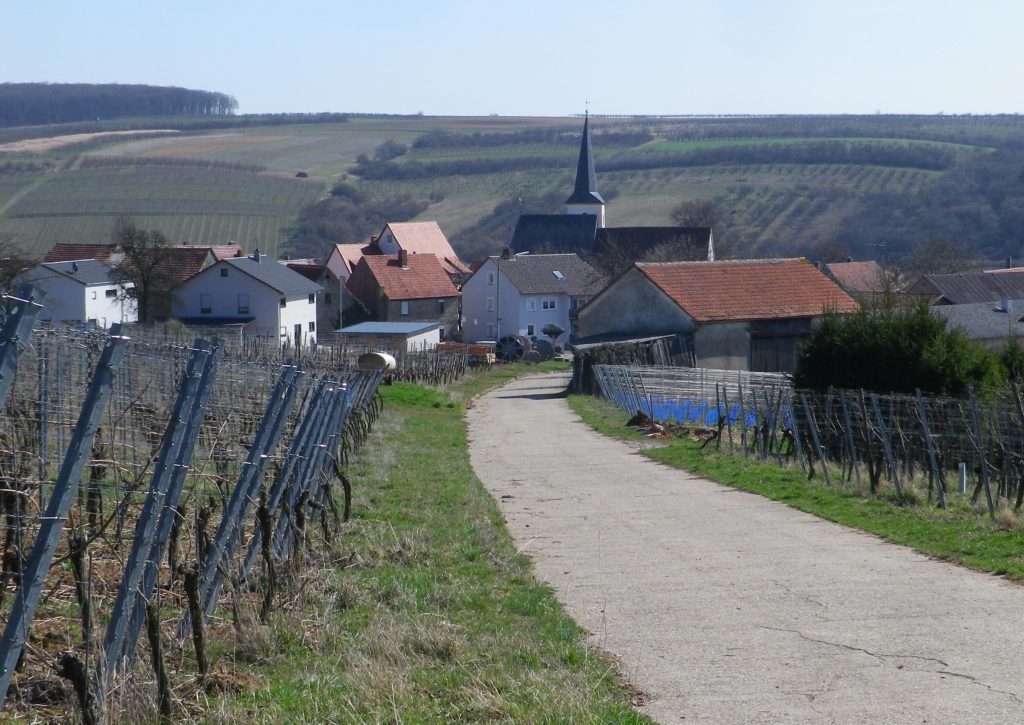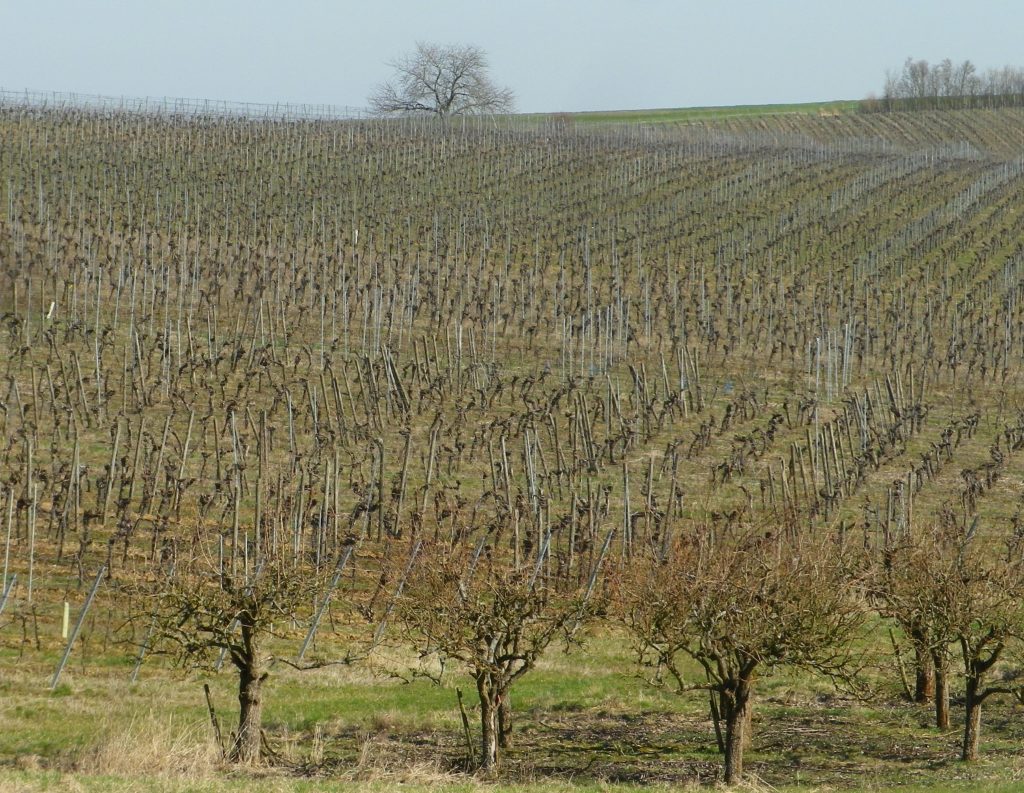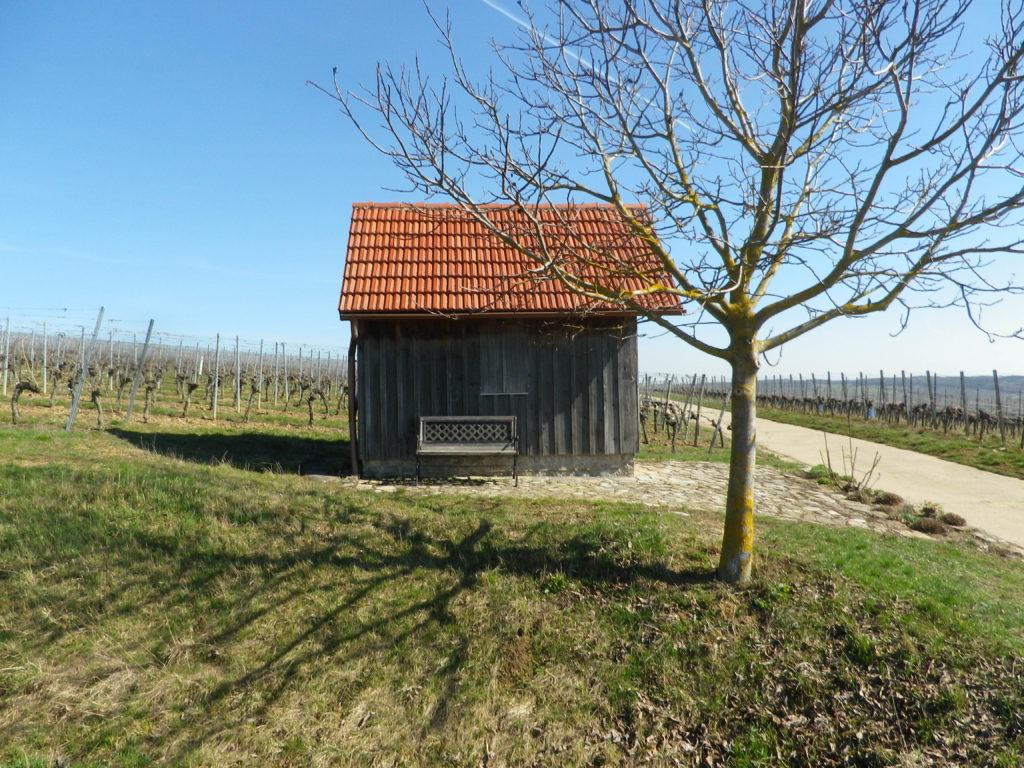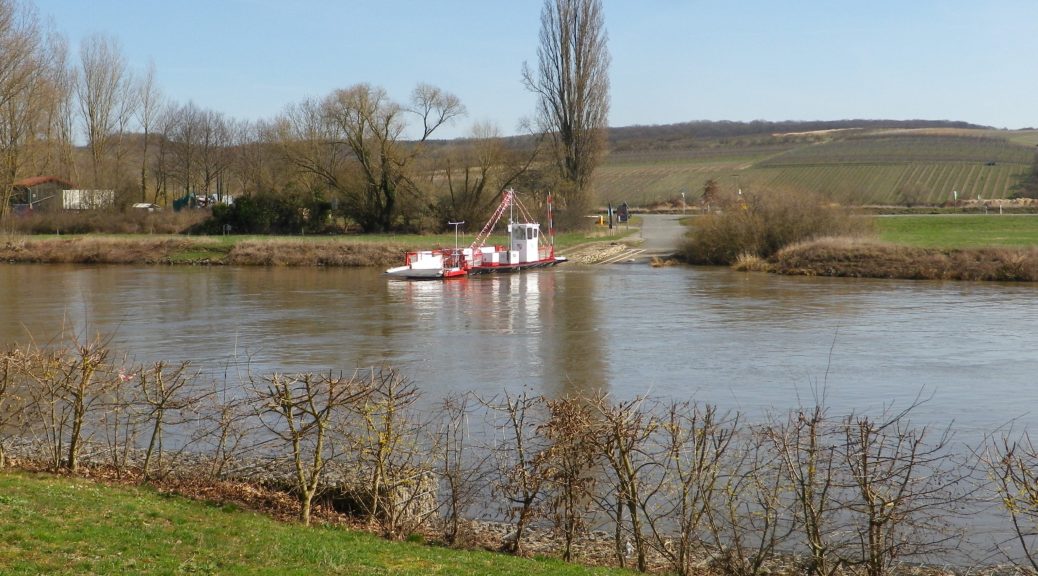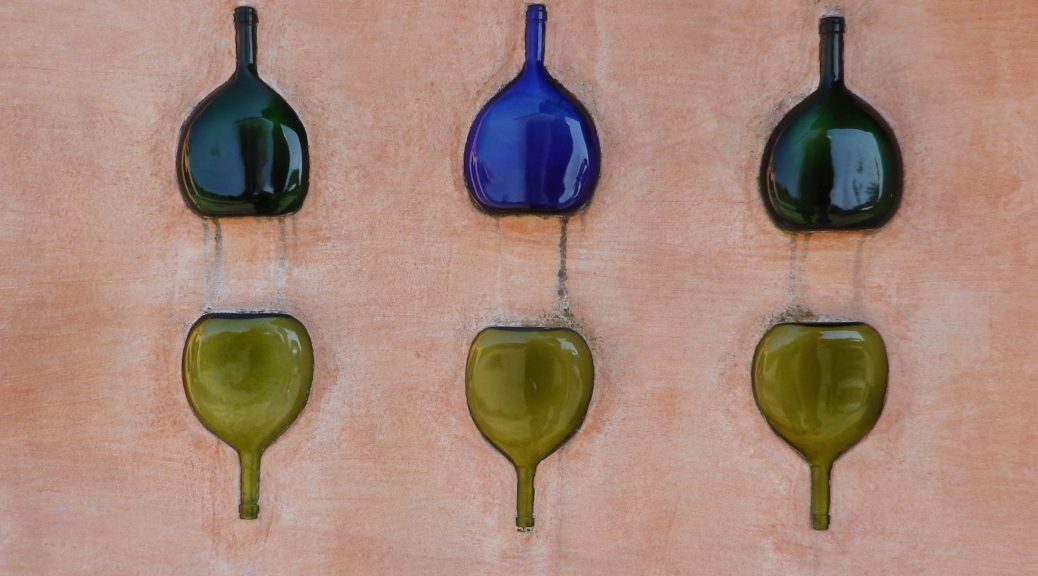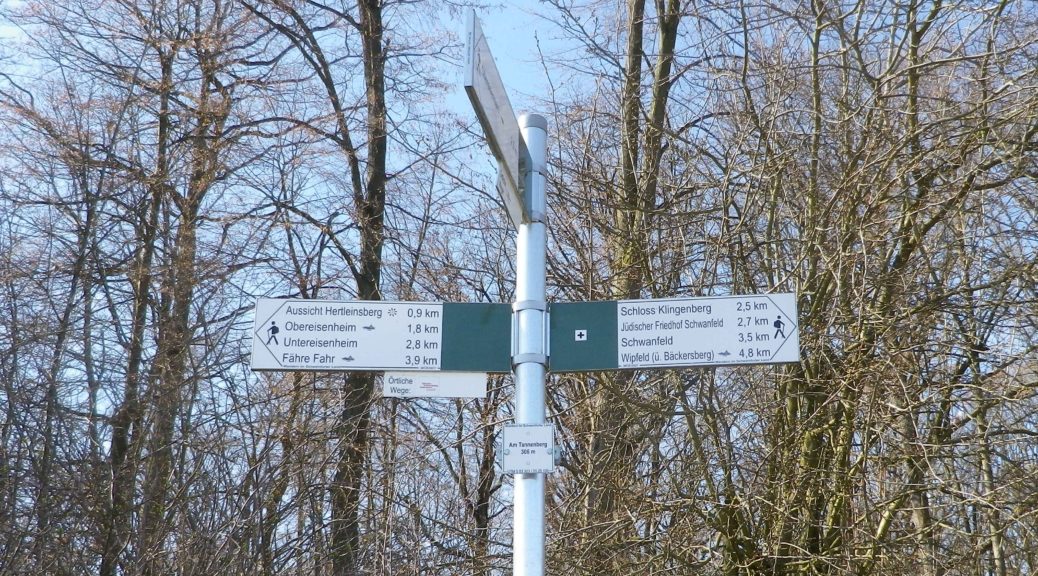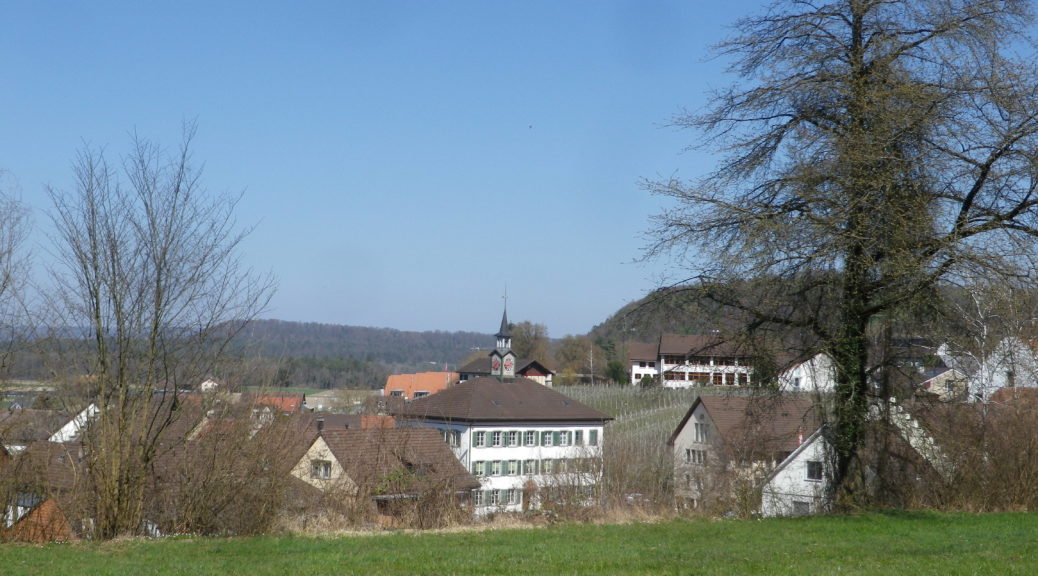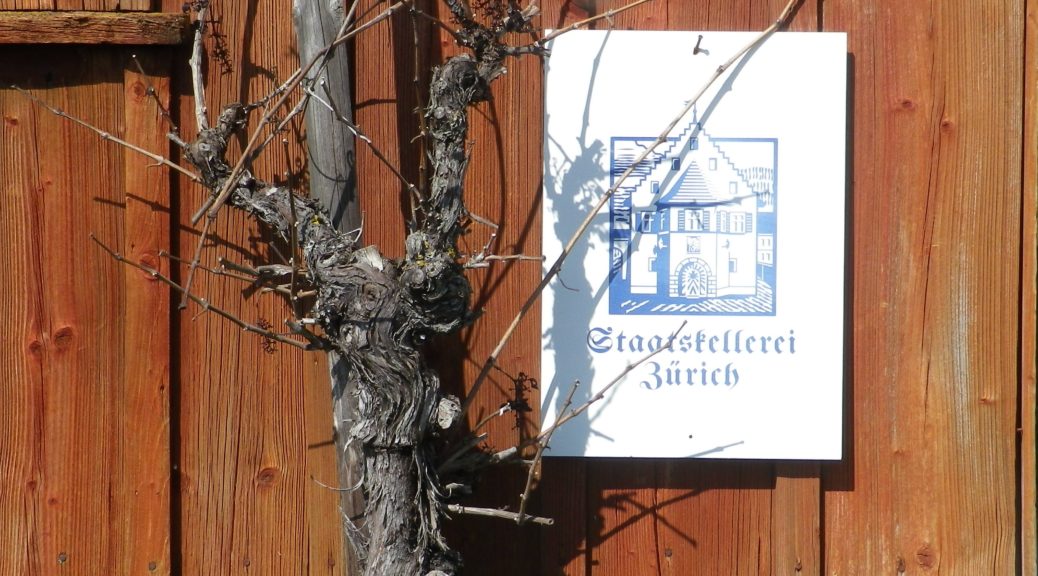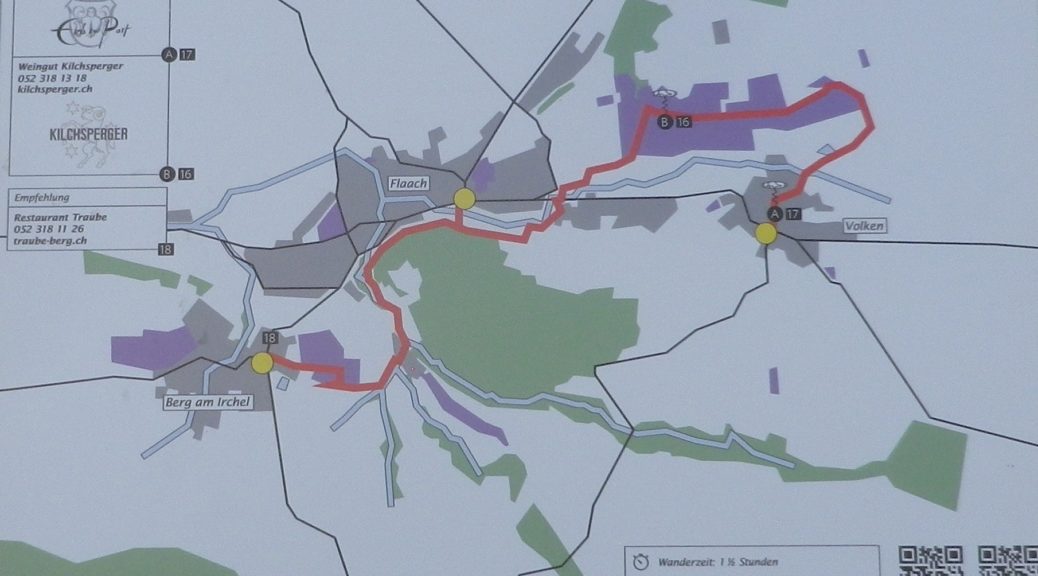Monthly Archives: April 2020
Spring is for Silvaner
I think Silvaner is a perfect spring wine. Slightly cooled, it has ripe stone fruit and fresh green grass/herbaceous flavors with a hint of minerality, and a fuller mouthfeel than Riesling but with less acidity. Perfect for sunny but cool days when a Riesling’s bracing acidity could bring a chilly versus a warm sensation overall.
A combination of warm, sunny Spring weather and a hiking itinerary in homage to Silvaner lured me to Eisenheim in Franconia’s Maindreieck district, where Silvaner first made its official appearance in Germany in 1659. Fortunately, Eisenheim’s riverside location is great not just for vines, but also for hikes.
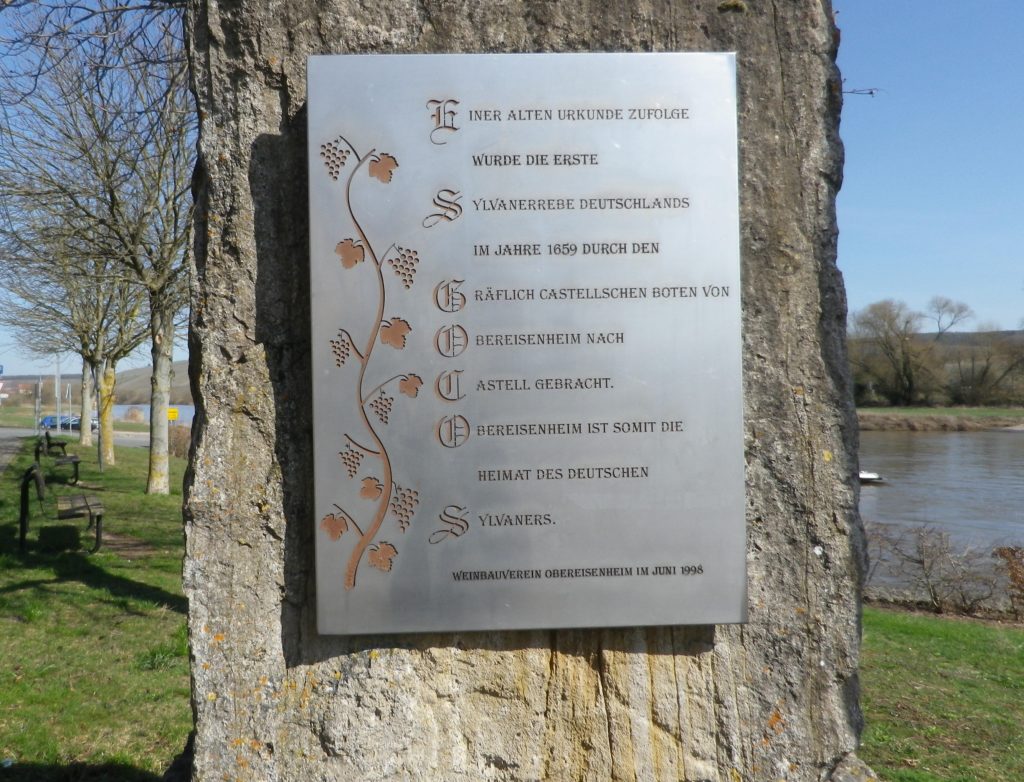
Beginning at the edge of the Main River, flowing slowly but inexorably along gentle green banks, the itinerary crossed the famous Main bicycle trail. In addition to hiking, this area is also ideal for bicyclists. Those who enjoy easy, leisurely itineraries will love the Main Bicycle (Main Radweg) trail, one of the favorites in Germany. Those who prefer a more challenging rides will follow one of several trails uphill, as did my hiking itinerary. The Silvaner Erlebnis trail leads through the quiet village, before entering into the vineyards. Soon, I was hiking over a hill and into a dale, amongst hectares and hectares (acres and acres) of vines that give the trail its name. Along the way, occasional signboards (only in German though) provide information on Silvaner, and the viticultural and vinicultural aspects of wine-making here.
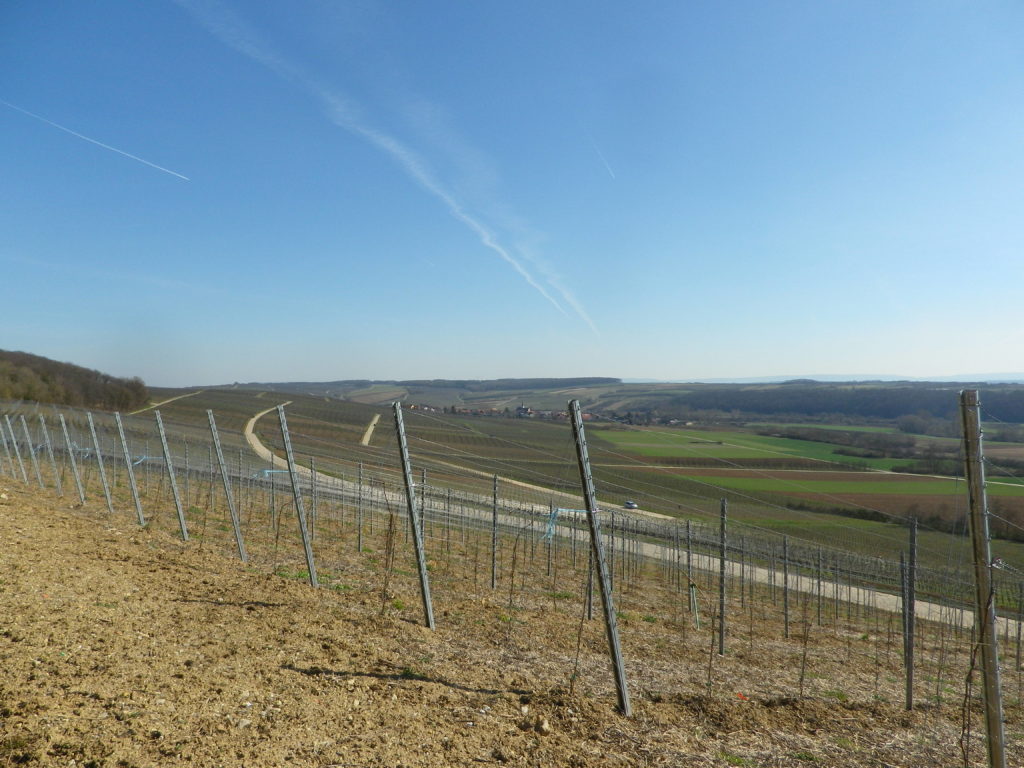
Once I finished the final, gentle ascent, I had my first glimpse of the Main River and the Steigerwald mountains. The trail proceeded along the tree-line paralleling the top of the ridgeline. I was glad it was early spring, because there was very little shade, and except for one tiny spot, I found myself entirely in the sun. The trail made its way through the south-facing vineyards, heading downriver. The twists and turns of the path offered different perspectives on the river and distant mountains.
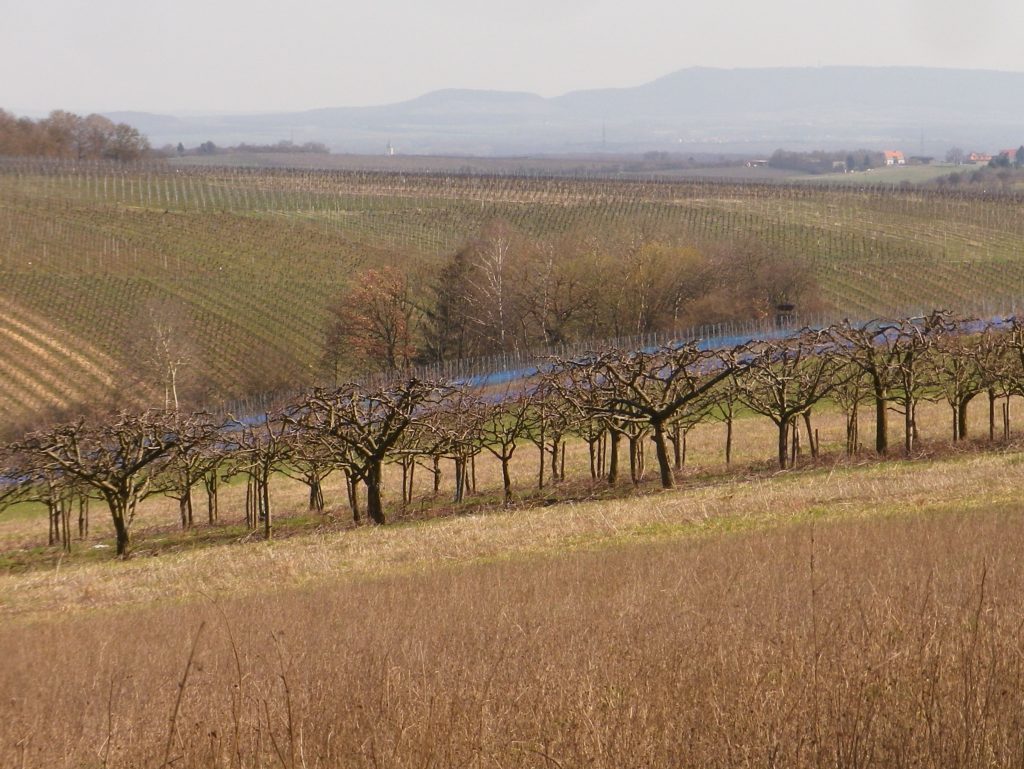
Soon the village of Untereisenheim came into view. The Weingut Hirn provides a unique and colorful visual cue. The winery’s main building is a Hundertwasser-esque building, a whimsical creation that invites comparisons between Gaudi’s Sagrada Familia basilica in Barcelona, and the Hundertwasser House in Vienna. The winery is open to the public, which gives visitors a chance to admire the building up close, and taste some excellent wine as well!
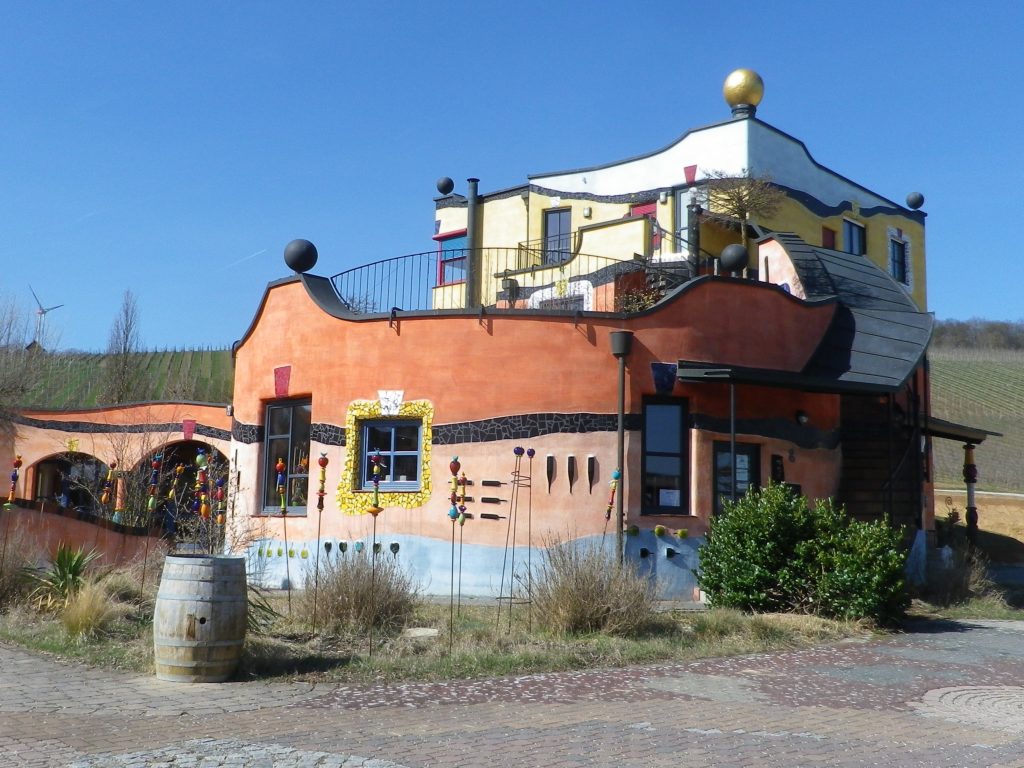
From Untereisenheim, the trail headed through the lower vineyards back to Obereisenheim. Benches along the way invite hikers to relax and take in the views. Peace and quiet predominate here, and a spell on a bench here and there, with friends and a glass of wine, add to the enjoyment of it all! Zum Wohl!
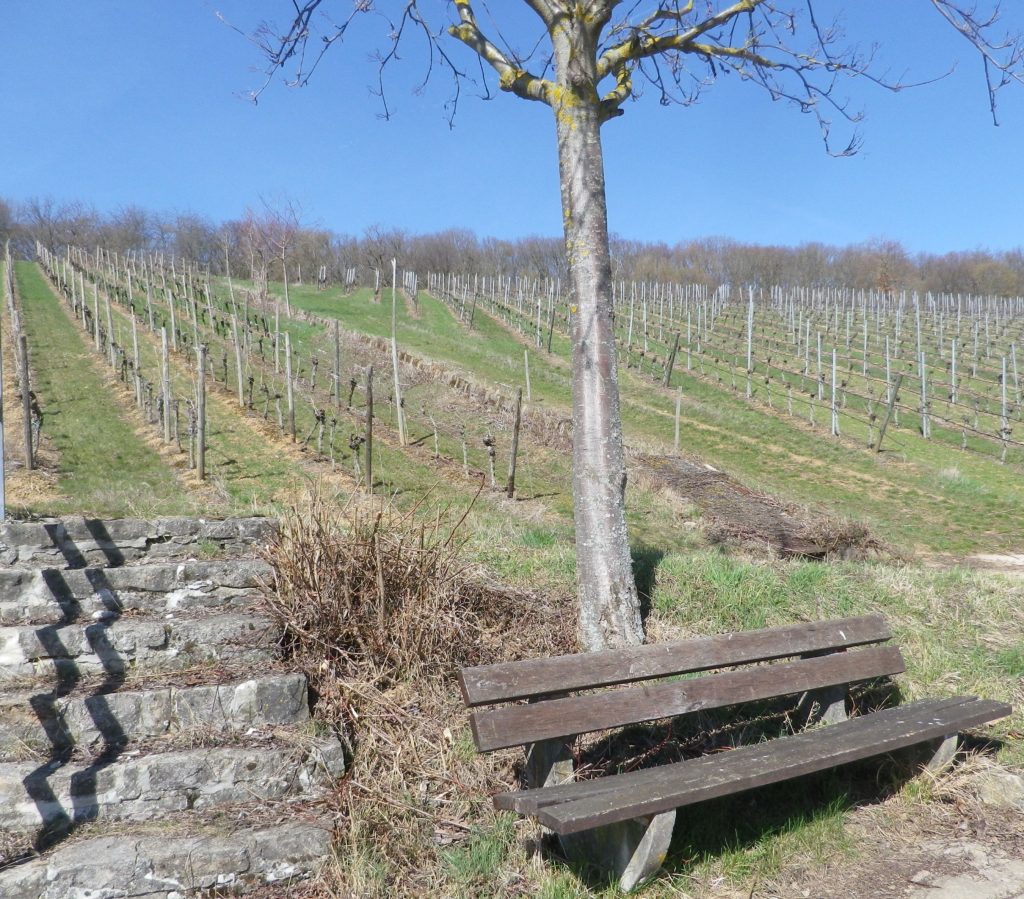
Wine Notes: Franconia’s Silvaner
What I Learned
Along the Main River in Franconia (Franken, in German), there are three wine districts of good repute: Maindreieck, Mainviereck, and the Steigerwald. This post focuses on the Maindreieck district only.
The Main, flowing basically from east to west, is a tributary to the Rhine River. The river makes three consecutive and dramatic curves close to the heart of Franconia, essentially going from east-west, to north-south, then south-north by Ochsenfurt, before curving roughly east-west again. The Maindreieck is thus a triangle (Dreieck) of land surrounded on three sides by the Main River. This area has become a paragon of viticulture in south central Germany. The most important and undoubtedly best-known town for wine culture in this area is Wuerzburg.
In Franconia, Riesling is not king, as it is in many other wine-growing regions of Germany. Silvaner plays that role here. In fact, it is one of the most important varietals for this particular area. Known officially in Germany as the Gruener Silvaner (Green Silvaner), genetically-speaking it is the same varietal as the less widely spread Blauer and Roter (blue and red) Silvaner mutations. Franconian vintners have grown Silvaner since the 17th century. Like the river, it came to Germany from the east, Austria, and moved westward, as far as the Rhein-Hessen wine region. It now grows even in the United States. The first definitive reference to it in Germany occurred in Eisenheim (location of a “Silvaner” trail), thus this small Franconian village is known as its German birthplace.
Many locals prefer Silvaner over Riesling. I find it the perfect spring-time wine. Slightly cooled, it has ripe stone fruit and fresh green grass/herbaceous flavors with a hint of minerality, with less acidity and a fuller mouthfeel than Riesling. Perfect for sunny but cool days when a Riesling’s bracing acidity could produce a chilly versus a warm overall sensation. Analogous to the season, it is usually produced to drink young, and those lucky enough to have a bottle of this wine should probably drink it within a couple of years.
What I Tasted
2017 Silvaner, Kabinett, Trocken, Praedikatswein, Weingut Hirn (Eisenheim): A dry white wine with medium minus white gold color, floral nose with a hint of spice; surprisingly neutral on the palette; smooth mouthfeel with medium acidity.
2017 Blauer Silvaner, Obereisenheim Hoell, Kabinett, Trocken Deutscher Praedikatswein, Weingut Kramer (Eisenheim): A dry white wine with medium minus gold; on the nose a spiciness reminiscent of cardamom, with floral, green wood, and spicy mustard flavors; medium plus acidity, with a full but tingly mouthfeel.
2015 Silvaner, Spaetlese, Grosse Gewaechs, Trocken, Praedikatswein, Weingut Hirn: A dry white wine with medium yellow gold color, spice cinnamon, vanilla, floral; cantaloupe, vanilla, apricot; medium acidity.
2016 Blauer Silvaner, Trocken, VDP Gutswein, Weingut Arnold (Randersacker): A dry white wine with medium gold color with a hint of rose; nose of red apple, vanilla and spice, with red apple, vanilla and slight toasted nuts flavors; smooth mouthfeel, medium plus acidity, but with a touch of honey after.
2016 Silvaner, Wuerzburger Schlossberg, VDP Erste Lage, Trocken, Staatlicher Hofkeller Wuerzburg: A dry white wine with rich yellow gold color; with green apple nose, and a spicy, green apple flavor; medium acidity with a smooth, crisp finish.
Silvaner Erlebnisweg: Trail in a Nutshell
Trail Name: Silvaner Erlebnisweg
Trail Type: Short distance circuit trail; well-maintained and almost exclusively paved, marking on the trail good in most places
Length:
Total – 6.8 kilometers/4.25 miles
Convenient to: Volkach, or Kitzingen, Germany
Marking:
Look for two types.
Green hills, blue river and white ferry on a which square background.
White letter C on a square, red(dish) background (indicating where the Silvaner Erlebnisweg diverges from the principle or other trails).
Trail Description:
The trail leads through mostly unshaded vineyards situated on gently rolling terrain in the Maindreieck, on primarily agricultural service lanes. This easy hike affords ample opportunities to admire distant vistas over the Main River valley, and plenty of benches (and the occasional picnic table) from which to enjoy them.
Trailhead:
Obereisenheim – An der Mainau/Dorfstrasse
Parking:
Obereisenheim – An der Mainau
Public Transportation Options:
Bus: The Frankenbus 8110 services this area from Kitzingen and Volkach. Check VVM (Verkehrsverbund Mainfranken) and VGN (Verkehrsverbund Grossraum Nuernberg) websites for schedules and routes.
Suggested Stages:
Trail Itinerary-Reference Points: (Counterclockwise)
Obereisenheim: Hintergasse, Marktplatz, Wipfelderstr, Setzweg, Buehlweg, cross Schwanfelder Strasse; Vineyards; back across Schwanfelder Strasse; long vineyard loop (almost to Dipbacherstr); Hertleinsbergweg, Bergstr
Representative Trail Photos:
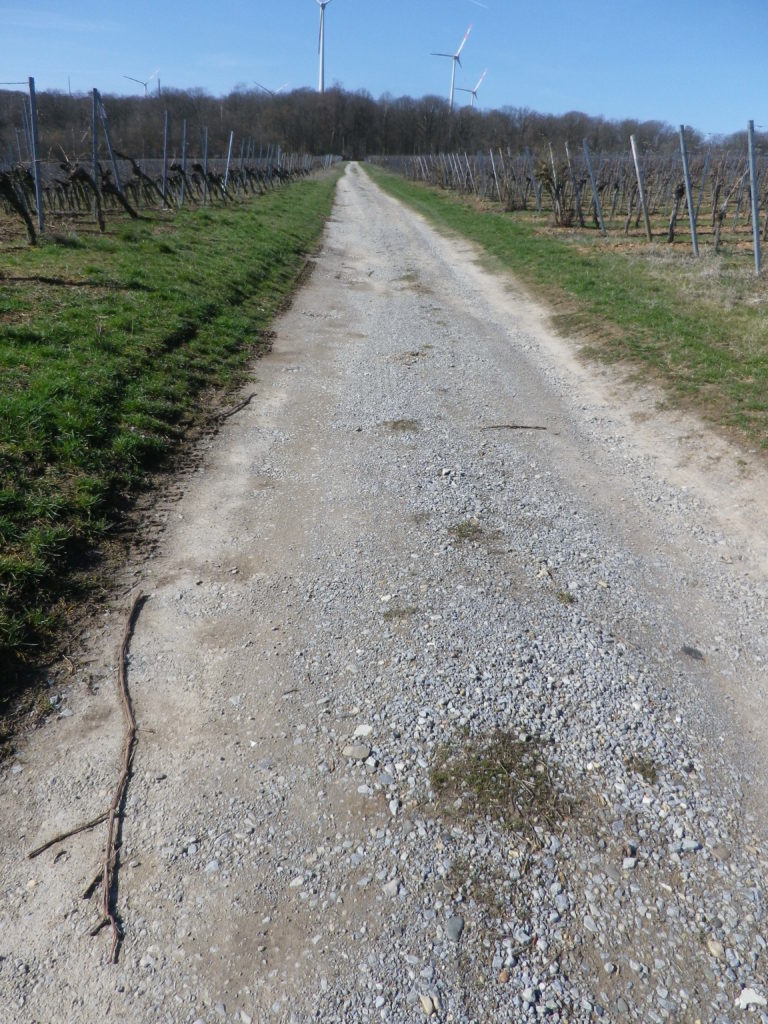
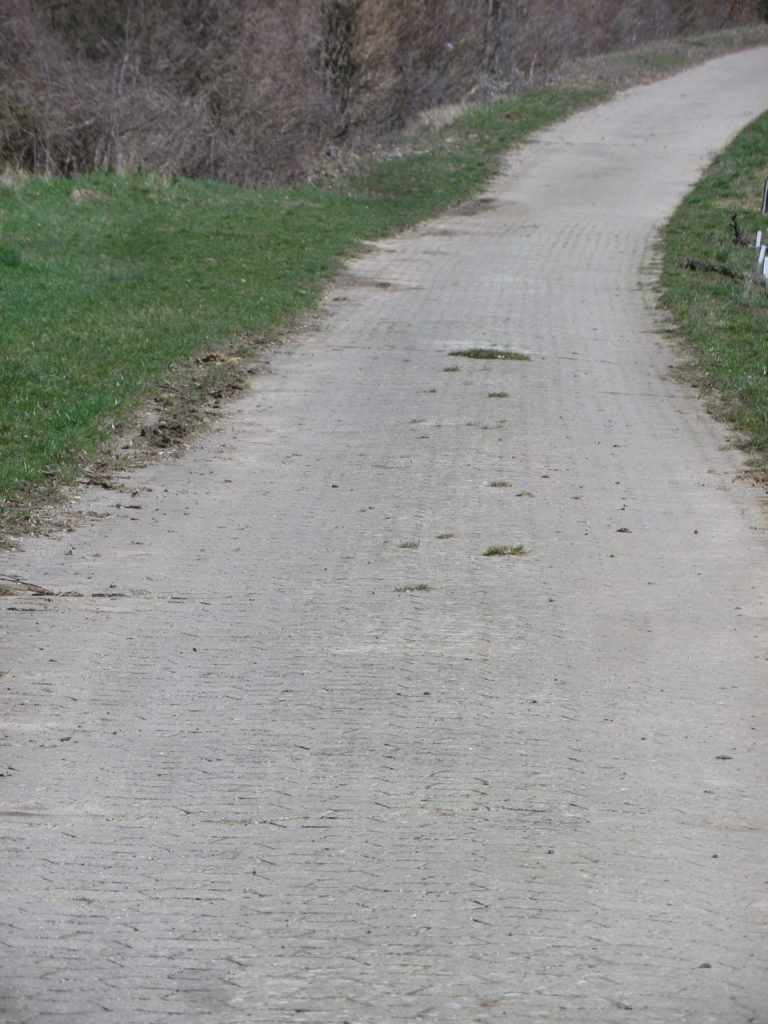
Restrooms:
None observed
Attractions on or near Trail:
WG Hirn is a winery designed in the Hundertwasser architectural style, and has acclaimed red and GG Silvaner wines!
Tasting along the Trail:
Weingut (WG) Jung, WG Schuler, WG Kramer, WG Reich, WG Ruegamer, in addition to WG Hirn, lie either directly on or near the trail.
Alternative Options:
Hiking: In nearby Fahr, the Obst-Wein-Main trail/Trail D circuit offers a short (3.5 kilometer) and a long (9.8 kilometer) version.
Biking: Eisenheim is on one of Germany’s favorite bike trails, the Main Radweg. Its itinerary follows mostly along the Main River for about 340 kilometers to the Rhine River at Wiesbaden, much of it on dedicated bike path. See the Nutshell here.
Additional Information:
Regional: https://www.frankentourismus.de/orte/eisenheim-169/
Trail specific: http://www.wandermap.net/de/route/3493744-silvaner-erlebnisweg-markt-eisenheim/#/z11/49.8300104,10.1214981/terrain
Comments:
The ferries at Obereisenheim and nearby Fahr make a fun three-minute Main River crossing for hikers and bikers in the area.
Worrenberg’s Wines and Vines
Zurich, Swiss financial capital with a major international airport and European travel hub, was not far away, as the map clearly showed. The occasional aircraft loomed overhead as a reminder. But otherwise, this corner of Switzerland was rural, peaceful and green – great characteristics for any hiking trail.
The Worrenberg Weinwanderweg trail route highlighted the vineyards and wines of three small villages. All villages were in the Canton of Zurich, but they were closer to Schaffhausen, the famous city of the Rheinfalls on the Rhine River. The high-point of the trail, literally and figuratively speaking, was the vineyard area known as the Worrenberg, a south-facing slope of sufficient steepness to make it ideal for planting vines in this area.
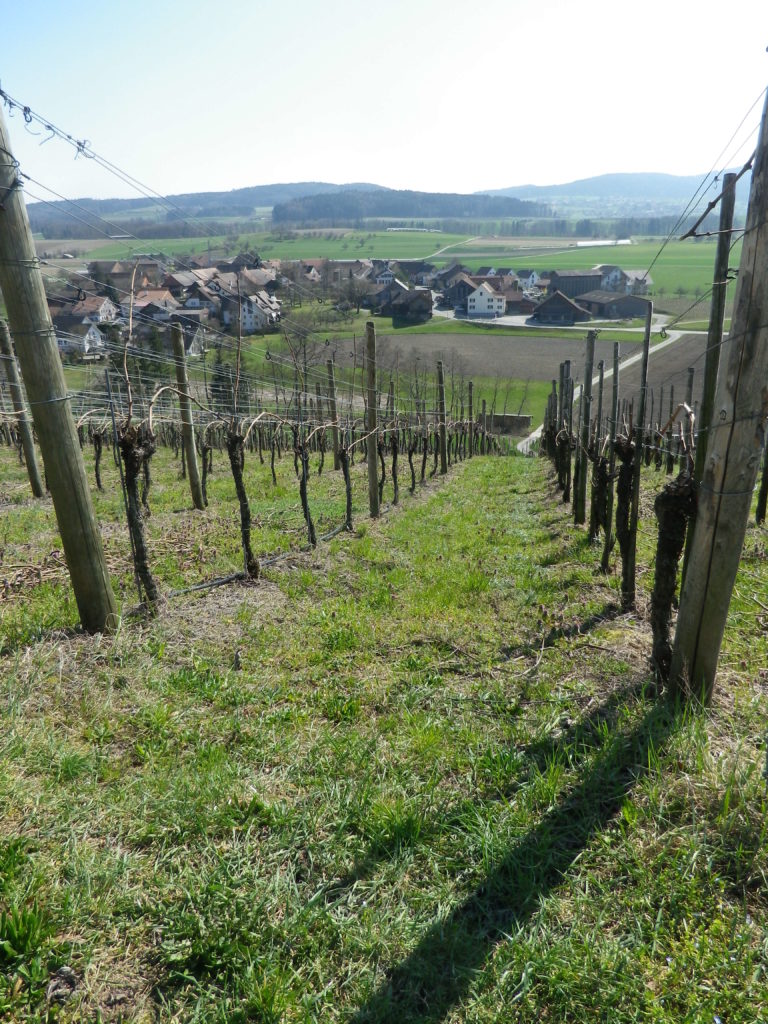
Zurich comes within what is known as the Deutsche Schweiz (German Switzerland), that part of Switzerland using German as its principle language. The Deutsche Schweiz has several different wine appellations, and in the region of Zurich, there is the Zuercher Weinland, a wine district not far from the wine region of Thurgau, centering around the Thur River, with the Rhine River to the west. It is a hilly region, not a mountainous one. Hence this short trail is an easy trail for families.
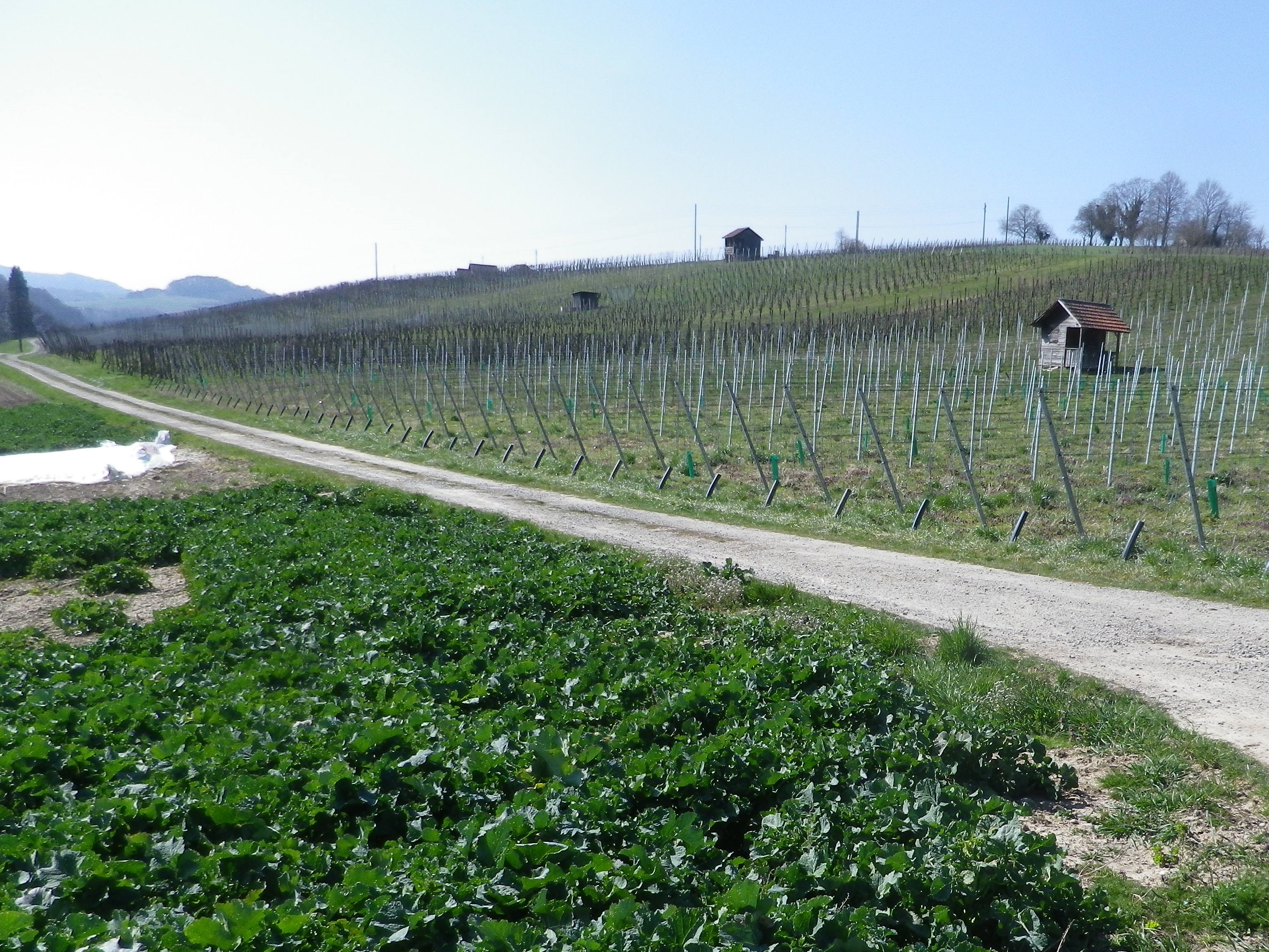
I began in the village of Berg am Irchel, which refers to the higher elevation south of the town. While there were a couple of wineries and a couple of taverns, it was difficult to see how people earned their livings. As I hiked along a couple of lanes, I passed a small “schloss”, a “palace” in name only, and soon entered the town’s small vineyard area.
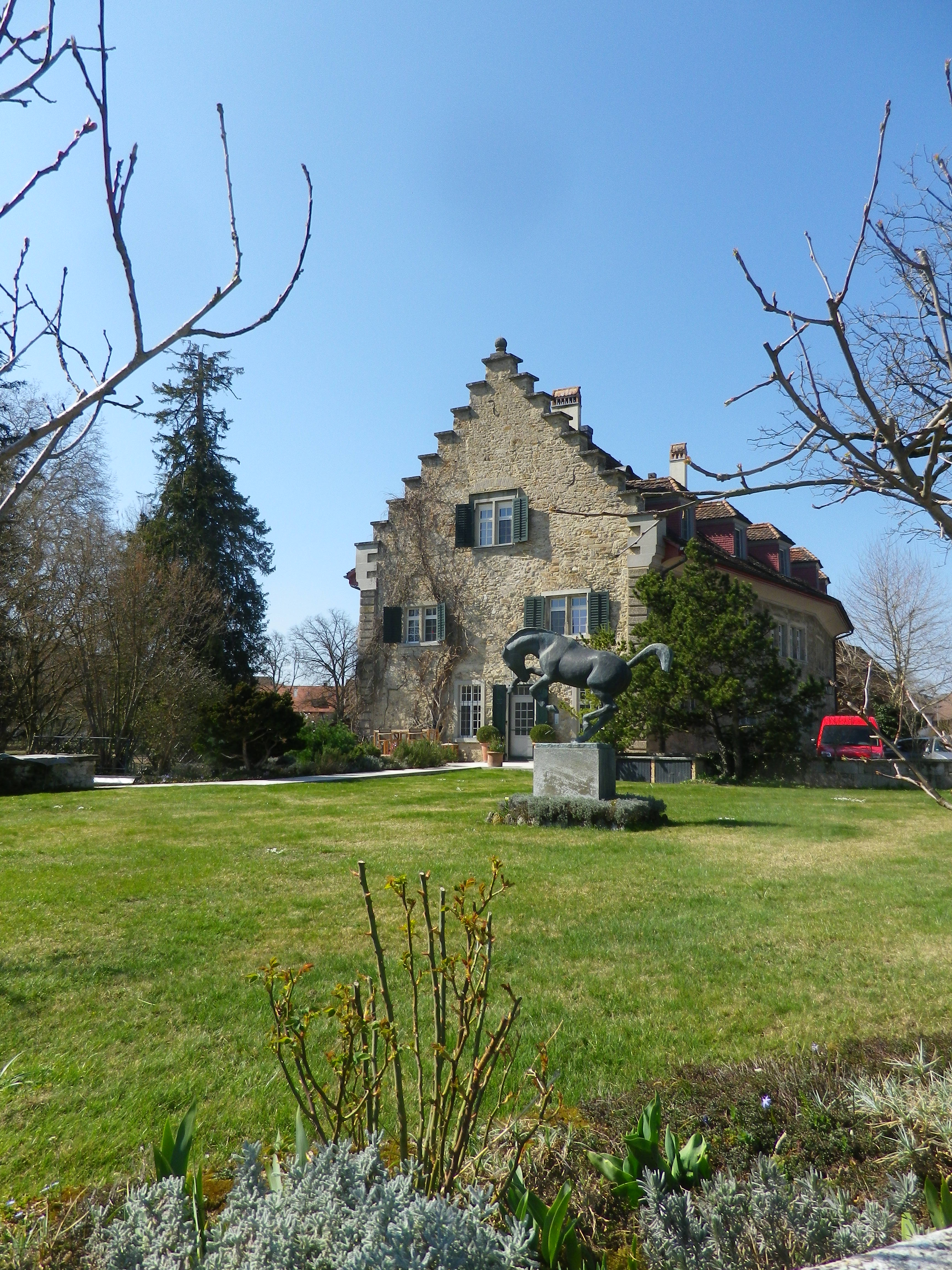
Once out of the vineyard area, the trail followed along a creek, shaded by old trees. The path led to Flaach, the second of the three villages, and the largest with almost 1300 residents. Nonetheless, I did not see a living soul as I meandered across the main street.
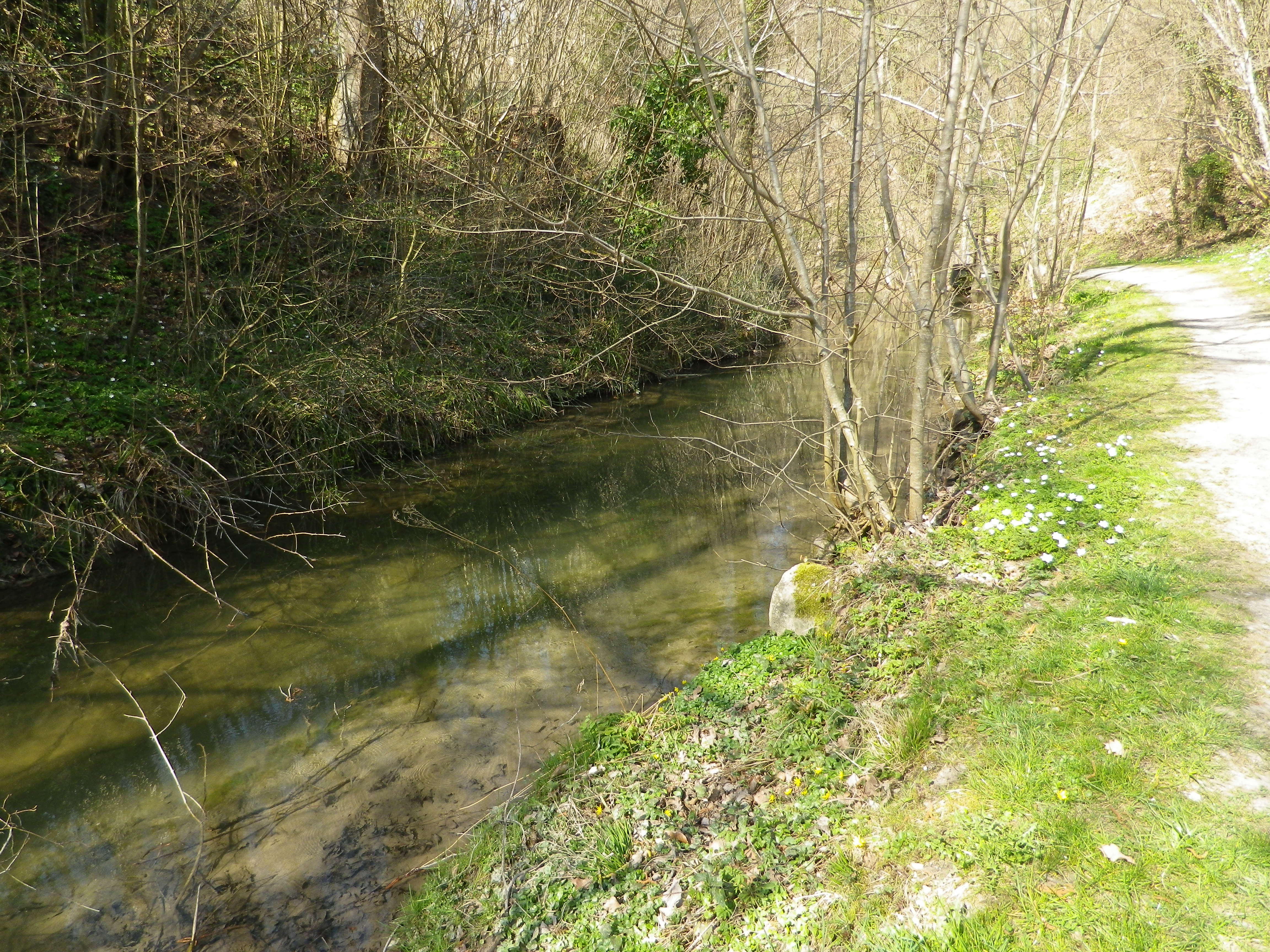
Leaving Flaach, winding up the side of the Worrenberg, were signs that provided information about viticulture and viniculture. The Worrenberg is the largest vineyard area in this district of the Zurich appellation, and several regional vintners had parcels here. A few vintner huts lined the way, including the one associated with the region’s largest winery: the Staatskellerei Zurich. Here and there, interesting perspectives on the villages and surrounding countryside appeared, to include the third village: Volken.
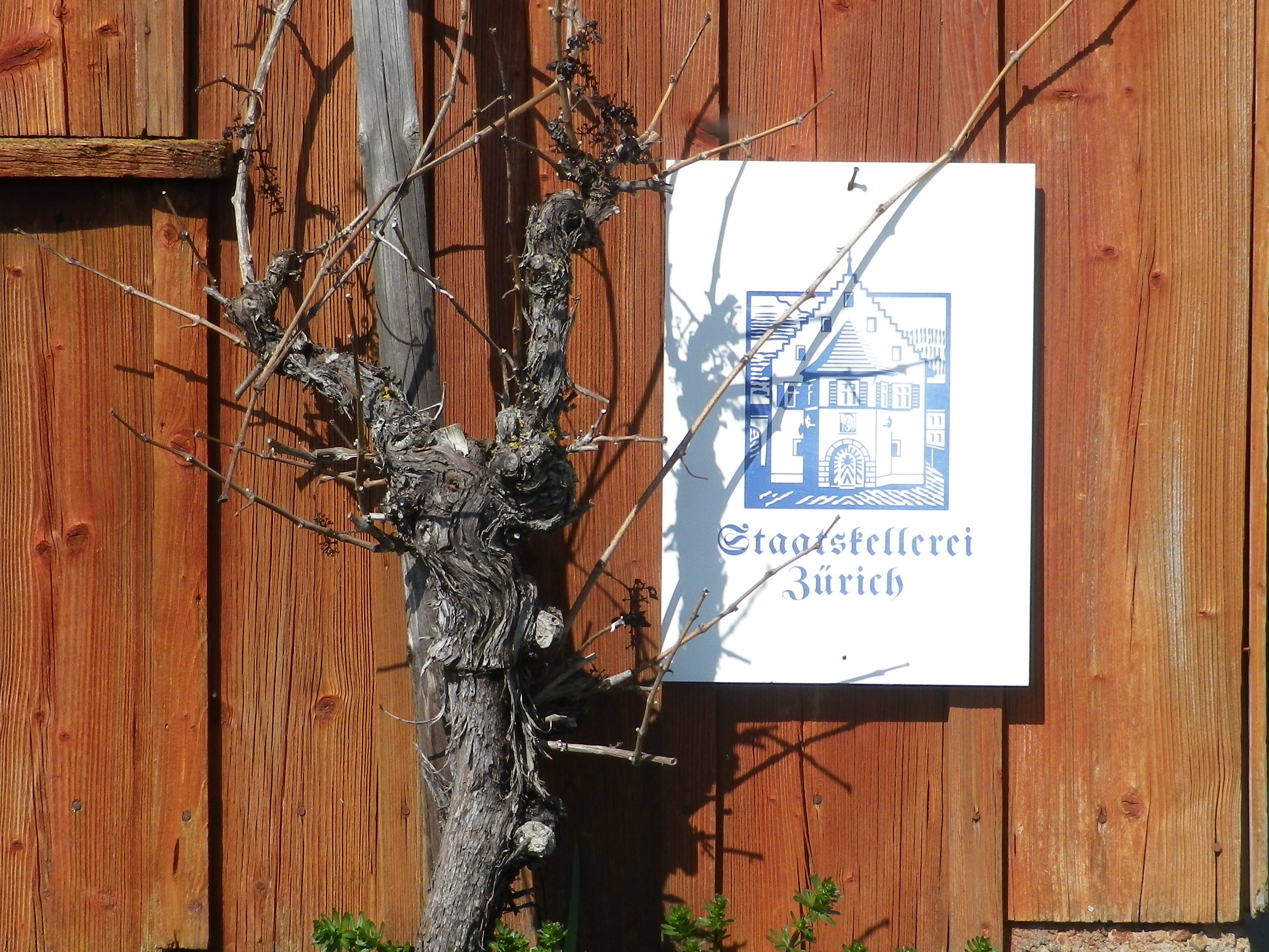
Soon I was walking along the deserted streets of Volken, past farmhouses and tidy Swiss residences. The center of town held a tavern, the Wirtschaft zur Post (closed), opposite a tiny grocery store conjoined with the Post Office. The warm greeting of the woman attending the store was enthusiastic and heartfelt. I imagine not many “foreigners”, let along locals, come in. But tiny or not, the store had a relatively large wine section, which luckily included local wines. And the one person I saw that day was an enthusiastic booster of the local wine industry. As she helped me choose the best selection of wines from local vintners, I realized that even when you think you are in barely inhabited countryside, you can always find somebody willing to talk about wine.
Wine Notes: Switzerland’s Zurich Appellation
What I Learned
Switzerland’s Zurich appellation is located behind the well-known Thurgau appellation on the shores of Lake Constance (Bodensee, in German), and the Sankt Gallen appellation to its east. It has five sub-districts, and clockwise, circling from north to south around the city of Zurich they are: the Zuercher Weinland, the Winterthurer Weinland, the Zuerichsee, the Limmattal, and the Unterland. Overall, the Zurich district is cooler, and more elevated than the vineyards in Thurgau, along the lake. Although fed by numerous rivers that feed into the Rhine, they are neither as large nor as temperature-moderating as the Rhine. The whole canton is covered by 613 hectares (1515 acres) of vineyard, according to the latest figures (2019). White varietals are less prominent (by approximately 2 to 3) than red ones, of which the Blauburgunder (Pinot Noir) features most prominently. It has a couple of interesting grape varietals, rare elsewhere.
Raeuschling, a white grape varietal, was well-known and highly cultivated in this part of Switzerland for several centuries. Like the Mueller-Thurgau grape that later replaced it, it was a varietal for cooler climates. It produces a crisp, acidic wine.
Gamaret, a cross between Gamay and Reichensteiner, is a red grape varietal first planted in the 1970s. Developed by Swiss scientists, its popularity originally spread quickly. In addition to the Zurich area, it grows in significant quantities as well as in the Vaud, Valais, Geneva and Ticino cantons.
What I Tasted
2015 Riesling-Sylvaner, Worrenberger, Erb zur Post, Halbtrocken, AOC Zurich, Weinbau Post (Volken): A dry white wine with medium gold color; a sharp, green apple and slight spice nose, with citrus, green apple and spice flavors; medium plus acidity, with a slightly acidic finish.
2015 Gamaret, AOC Zurich, Trocken, Weingut Bauer (Berg am Irchel): A dry red wine with dark minus purple red color; a tobacco, chocolate and leather nose, with vanilla, blackberry, chocolate and leather flavors; a complex and interesting varietal wine with high tannins (opened in August 2019).
2014 Pinot Noir, Worrenberger, Erb zur Post, Trocken, AOC Zurich, Weinbau Post (Volken): A dry red wine with medium ruby red color; a fruity nose with a hint of floral notes, and blackberry flavors, with a hint of floral honey; medium plus tannins, with a slightly acidic finish.
Worrenberg Weinwanderweg: Trail in a Nutshell
Trail Name: Worrenberg Weinwanderweg (AKA: Weinwanderweg am Worrenberg)
Trail Type: Short-distance trail; well-maintained and asphalt or hard-packed surfaces, marking on the trail is okay
Length:
Total – about 3 kilometers/almost 2 miles
Convenient to:
Schaffhausen or Zurich, Switzerland
Marking:
Yellow signs with stylized man in solid black, or “Weinwanderweg” in red letters on a white rectangular sign.
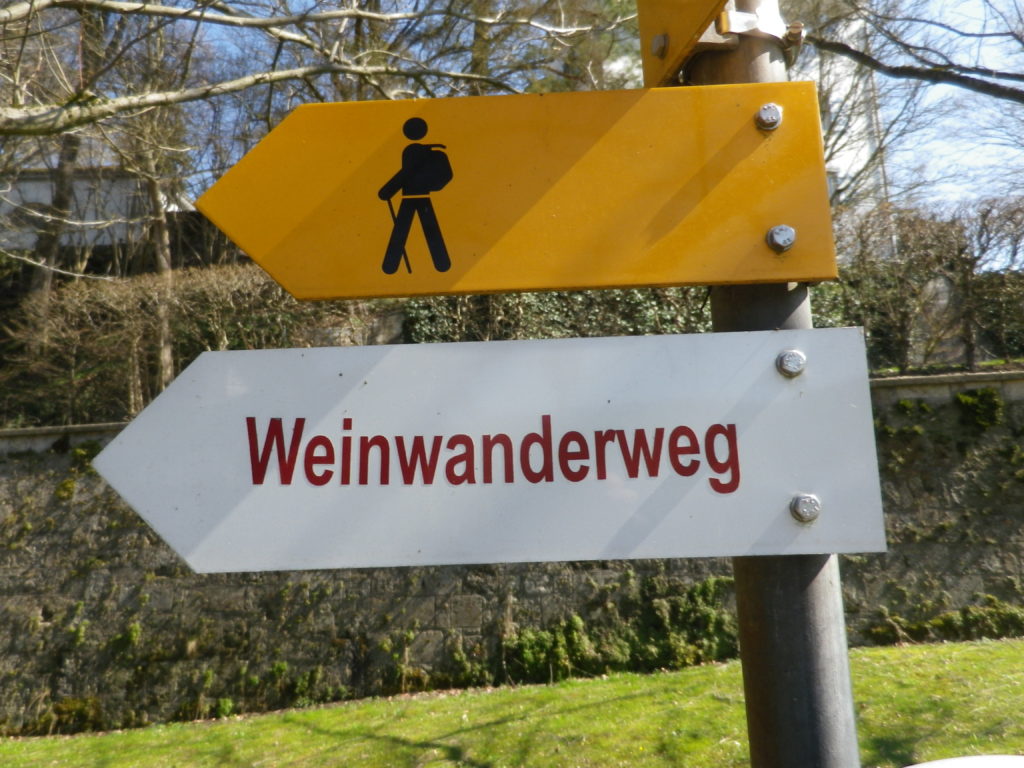
Trail Description: A very short and gentle hike through quiet, countryside, with vistas of rolling hills in the distance. Approximately one-quarter of the whole trail is shaded, as it passes through woods. The rest is in sun. Suitable for families with elementary-aged children, and very suitable for baby carriages (in all but a small section in the woods, where for less than 100 meters the going is a bit rougher) as well.
Trailheads:
Start: Berg am Irchel: Dorfstr
End: Volken: Flaachtalstr
Parking:
Parking spots are here and there along the lanes, and near fields on the outskirts of the villages.
Public Transportation Options:
Rail: The nearest station is in Andelfingen, with commuter service trains from Schaffhausen and Winterthur
Bus: The Swiss Postbus lines 670, 675 and 677 service these villages
Suggested Stages:
Not applicable
Trail Itinerary-Reference Points: (West-East)
Berg am Irchel: Dorfstr, Schlossstr, fields, along stream; Flaach: cross Oberdorfstr, Andelfingerstr, through vines on and up a slope; Volken: Glemettenstr, Flaachtalstr
Representative Trail Photos:
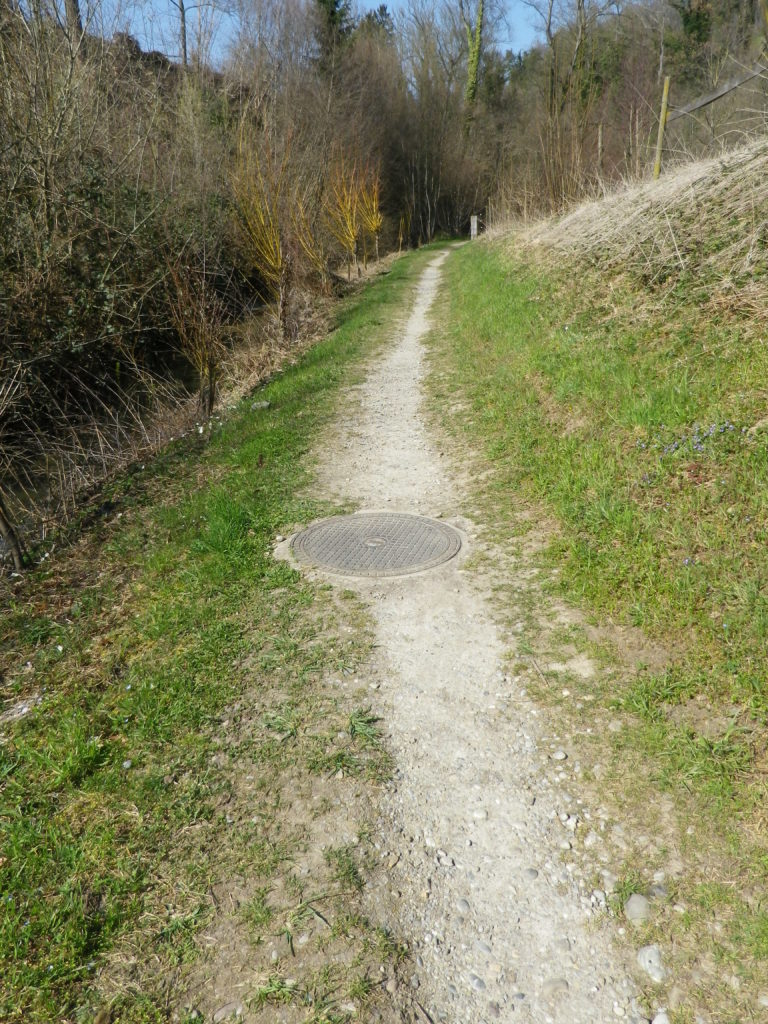
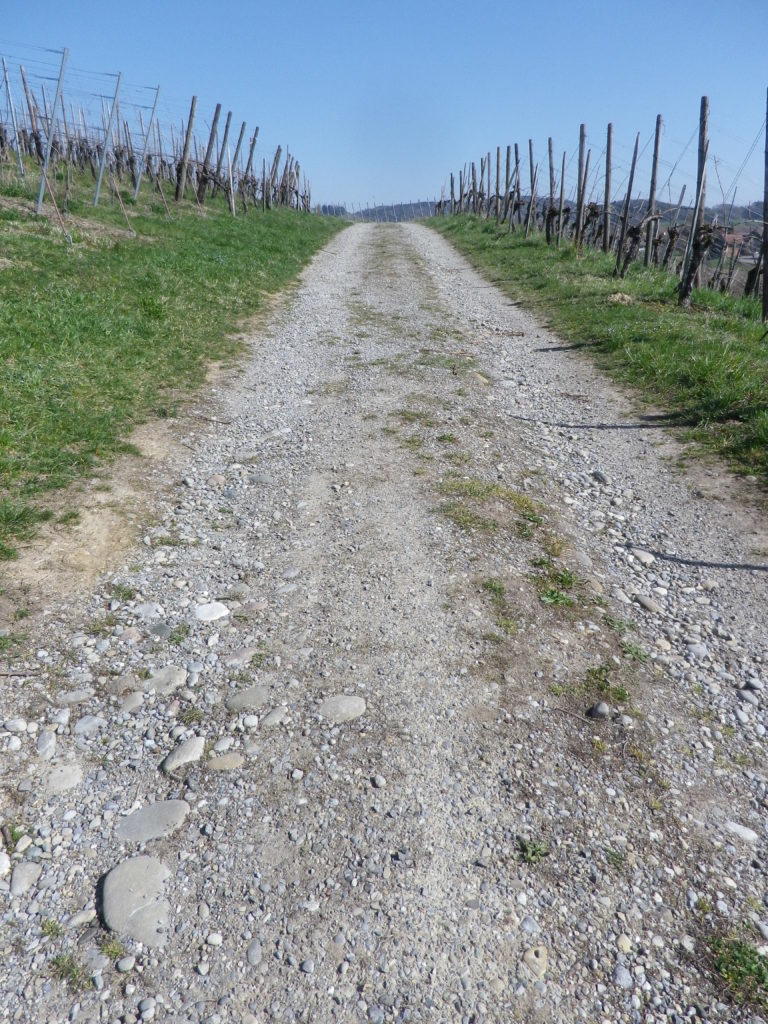
Restrooms: None observed
Attractions on or near Trail:
None observed
Tasting along the Trail:
Weingut Bauer in Berg am Irchel; Weingut Kilchsperger in Flaach; Weingut Zur Post (also a tavern) in Volken.
Alternative Options:
Hiking: Other hiking possibilities are available from local tourist offices/information points.
Biking:
-The 18 kilometer/11 milesWorrenberg-Thur bike tour follows from Flaach, over the Worrenberg, along the Thur River, then a bit along the Rhine River before returning to Flaach. Listed as medium plus difficulty.
-Part of the 90 kilometer-long Ostschweizer Weinroute (Wine Route), passes through Ossingen, about 10 km/6 miles away, on its way from Sankt Gallen to Schaffhausen, and the Rheinfalls.
Additional Information:
Regional: https://www.zuercher-weinland.ch/
Trail specific: http://www.worrenberg.net/Weinwanderweg/
Comments:
None
